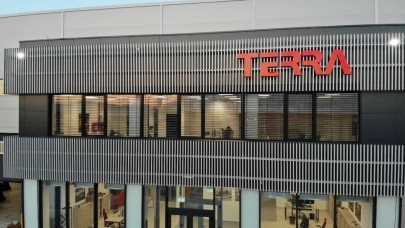Last month, Cushman & Wakefield and DTZ merged under the Cushman & Wakefield brand. Jonathan Hallett (Managing Partner, Central Europe) and Gergely Pados (Managing Director, Hungary) talked to us about the merger, Cushman & Wakefield’s plans and the future of the Hungarian property market.
Last month, Cushman & Wakefield and DTZ merged under the Cushman & Wakefield brand. Jonathan Hallett (Managing Partner, Central Europe) and Gergely Pados (Managing Director, Hungary) talked to us about the merger, Cushman & Wakefield’s plans and the future of the Hungarian property market.
How did the new Cushman & Wakefield come into being?
J. H.: The person behind all this is Brett White, the man who built CBRE. Having left CBRE he wanted to do it again, but he wanted to build something even better. The capital came from TPG, PAG, and the Ontario Teachers’ Pension Plan. This private investment consortium bought four companies: UGL's facility management business, DTZ, Cassidy Turley and Cushman & Wakefield. The previous three were branded under the name of DTZ and subsequently DTZ was rebranded Cushman & Wakefield.
Why now?
J. H.: There are two principal things in real estate that have become global: occupiers and capital. In order to get better access to that global capital and also to work more closely with occupiers, you need to have a platform that you can build globally. The platform of the new Cushman & Wakefield gives us the ability to compete as one of the big three firms on a global level. Another important aspect is that, unlike with other mergers that have taken place over the past couple of years, the market is behind us this time.
What is the new Cushman & Wakefield going to be like in Hungary?
G. P.: To put it in numbers, we are a combined business of 90 people, which by sheer size will make us the biggest international advisory firm in the real estate market. Furthermore, what I think is exciting is that we have combined our track records, experience, and pipeline. Importantly, we have excellent client relationships and the number one focus is making sure we do everything we can to look after those client relationships. Our role is to help find opportunities for our clients and help guide them, help them make the right decisions for their business. The agency world is all about knowledge and how to use that knowledge in the most effective way to help your clients.

How did the merger happen in practice? Were there any difficulties?
G. P.: It came naturally. Hungary is a small market, so despite the fact that we had worked for different companies, we've known each other for a long time. From day one everyone has enthusiastically accepted that we are one company, and from then on people started going to joint meetings, introducing each other's clients, sharing works in progress, already thinking about the future.
Do you expect the Hungarian market to be dominated by the “big three"?
G. P.: I think it always has been, really. And I'm the happiest when competition is strong, because that is what keeps us on our toes. If we can deliver tailor-made solutions and advice to our clients, that is how we become the best at our trade. It's great if you have the biggest turnover, but the client is not interested in that. If I go to a client and say “Cushman & Wakefield's turnover is nearly 2 billion" they'll go: “Okay, but what are you going to do for me"?
Am I right when I say that the majority shareholder of the new Cushman & Wakefield is TPG?
J. H.: TPG is part of the private investment consortium that acquired DTZ and Cushman & Wakefield.
Recently, TPG also acquired TriGranit, a Budapest-based developer and P3. What does this mean for Cushman & Wakefield?
J. H.: There are two elements to this. One is that TPG sees real estate as a natural core focus today and going forward. Number two is that the group of investors behind this merger is not the same as the group of investors behind the acquisition of P3 or TriGranit. TPG is a common investor, but it is not the same consortium buying into the companies. There is absolutely no direct link between the different firms. And we are treating them exactly the same as any other client, there is no direct pressure.
Based on the acquisition of TriGranit and P3 it seems like TPG has a strong focus or interest in Central and Eastern Europe.
J. H.: They have invested a huge amount in real estate companies elsewhere as well. But the fact that they are putting capital into this region is, in my view, a positive move, in terms of further capital coming to these markets.
What do you see happening on the regional investment market?
J. H.: Pricing is moving quickly globally. In the Czech Republic and Poland pricing has also moved remarkably rapidly and moving closer to Western European levels. The reason why pricing is aggressive is that there is an abundance of capital that hasn't been spent for a long time and that capital is coming from a wider field that it has ever come from. Capital is also cheaper than it has been for a long time. Returns from other forms of investment are generally low and this also makes property a favourable choice for investors.

What about the less popular markets of the region?
J. H.: Romania has already started to see a lot more interest, as has Slovakia and to a lower extent Bulgaria. These markets though are small in comparison to the Czech Republic, Poland and Hungary. I think Hungary is on a bit of a cusp, it is starting to look cheap and the fundamentals of the market are pretty sound. The negative aspect of Hungary is that it has been seen internationally as politically not as stable. And now, just as the market has started improving, Hungary is all over the press again.
G. P.: I think we are indeed on a cusp, because we've started to see the first big transactions happen, and I believe over the next 12 months there is going to be an absolute acceleration of capital coming into the Hungarian market. I remember last year when Diófa purchased Green House from Skanska; all of us were ecstatic. We thought that things would finally start to happen. Local funds of Diófa and Erste continued to buy office buildings, but it didn't set the world or Hungary on fire. Where we saw an acceleration of interest was luckily a deal that we were involved in, when Morgan Stanley and others purchased the AEW portfolio. We mean no disrespect to Diófa or Erste at all, but everyone has been waiting for a deal with the likes of Morgan Stanley to become public.
Do you expect more international institutional investors to follow Morgan Stanley in Hungary?
G. P.: Definitely.
Even German open-end funds or is that too hard-core for the time being?
G. P.: I think they will come when everyone feels comfortable with the market. Financing terms also need to improve. Financing is still an issue in Hungary, more so than in other markets in Central Europe.
What are your projections for the Budapest office market?
G. P.: I think the key is that we anticipate vacancy rates to dip well below their current levels. By the end of the year they will be lower than 14% and will get to 12% sooner rather than later, a level not seen since 2006/2007.
Will we see new speculative developments?
G. P.: We are seeing the likes of Atenor, Skanska, and HB Reavis starting speculative developments and when you review the portfolio of those three developers over the last two years, all of them have been very successful. They are basically fully leased or almost getting there. Still, most developers say that it is still not necessarily the right time for them to start speculative developments because of the financing, the rents. However, with a decreasing vacancy rate we see that incentives are already shrinking and the next natural step will be a slow but steady rental growth.



